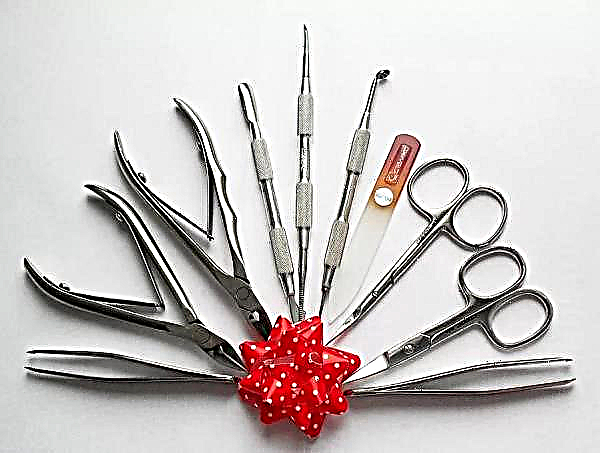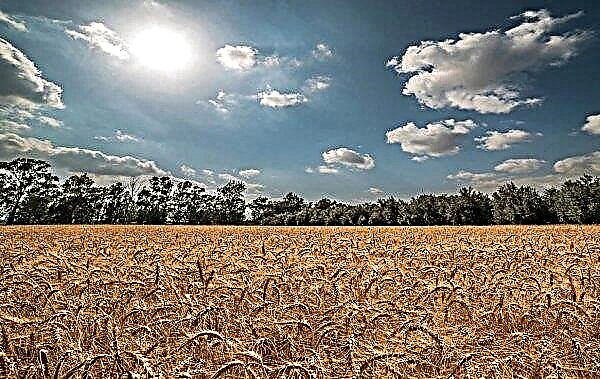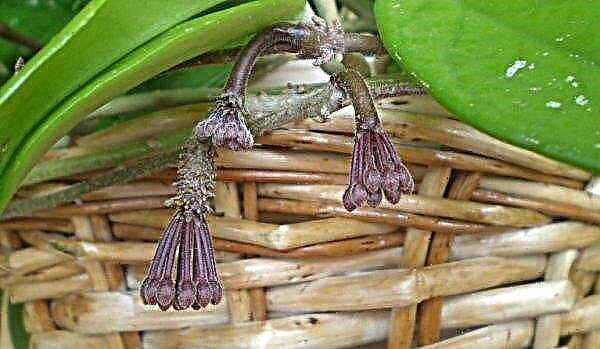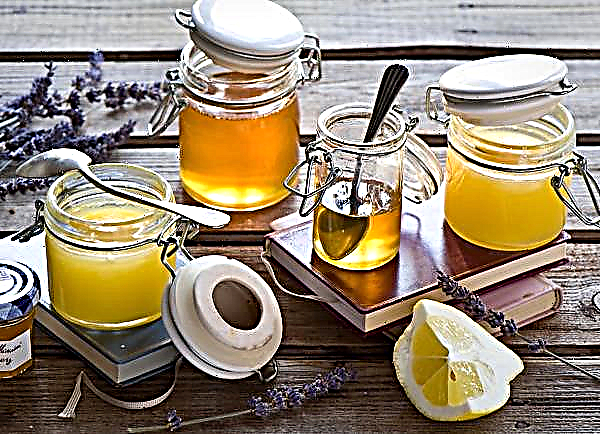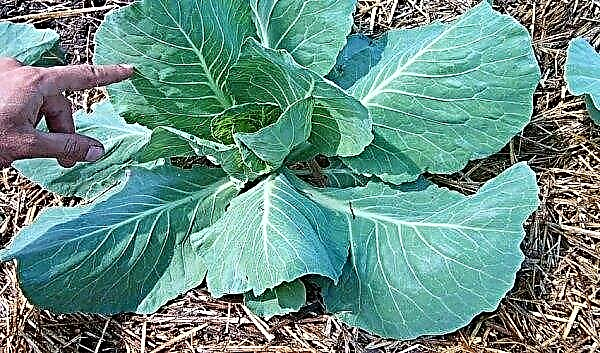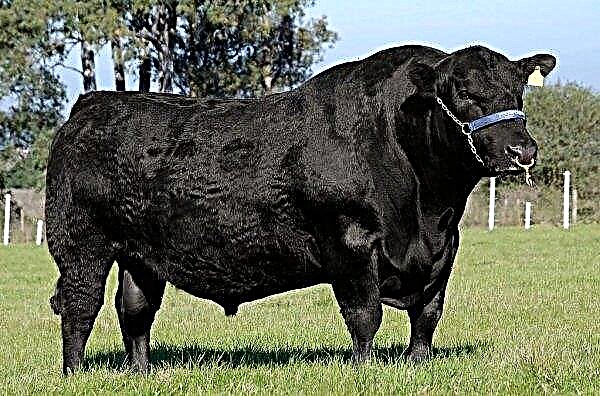Modern landscape design is saturated with a variety of ways to design the site. One of the most sophisticated and sought after among them is the Mediterranean style. It compares favorably with a unique combination of various grassy flowering species and perennial shrubs and trees. The article describes in detail the characteristic features of the Mediterranean garden in landscape art, and describes all the subtleties of its design.
Characteristic features of the style
The Mediterranean garden is quite multidirectional: it combines all sorts of elements of ancient Greek or Roman culture, as well as various modern details of the decor. At the same time, no center of a summer cottage is provided for here: all elements must have their own individual place, however, they must be an integral composition.
Did you know? Modern principles of landscape design were formed in the first half of the 20th century in Great Britain and Germany. The main goal of art was the ennobling and landscaping of large industrial centers covered with dense concrete buildings.
The average landscape in this style is a small courtyard or patio, the characteristic features of which are the following:
- compressed space surrounded by a solid fence;
- all kinds of vegetation typical of the Mediterranean climate;
- all design elements do not have a complex semantic load;
- a combination of soil with large and small stones, as well as pebbles;
- gazebo or bench, as well as a small water body;
- stylized elements of decor in the ancient Greek or Roman style;
- unity between plants and artificial objects;
- pergola (canopy) as an essential element of the landscape;
- the predominance of white, cream, blue, terracotta and yellow shades in the color scheme.
Site selection and requirements
The Mediterranean territory is strewn with rocky plumb and slopes, which is why this style is considered a real find for owners of plots located on a hilly area. Here, it will be most successful to recreate the natural landscape without resorting to any complicated agricultural techniques.
If the territory is located on a plain, it will be necessary to create artificial elevations. To do this, the territory should be divided into separate zones using stairs, rocky walls, terraced slopes or hedges.
What plants to plant in a Mediterranean garden
As mentioned above, the best basis for the Mediterranean garden is considered to be all kinds of vegetation of the subtropical zone. The basis should be a variety of flowering plants, planted in large hinged or stationary containers, and species should also be found in open soil. In this case, you must adhere to the principle of the predominance of one variety or species over the rest. Grassy vegetation must be supplemented with deciduous or evergreen low-growing trees with a compact crown. They are often planted also in wide garden pots. If necessary, tall trees with a spreading crown should be planted as the main flora of the upper tier.
Grassy vegetation must be supplemented with deciduous or evergreen low-growing trees with a compact crown. They are often planted also in wide garden pots. If necessary, tall trees with a spreading crown should be planted as the main flora of the upper tier.
The following plants are suitable for planting:
- in open soil - daisies, clematis, echinacea, irises, hops;
- when it is necessary to improve the fence or the foot of the slope - giant bow, bindweed, gladiolus;
- in hanging garden containers - sweet peas, nasturtium, petunia, zinnia, calendula, marigolds;
- tree-like - thuja, nut, chestnut, any columnar fruit trees;
- for planting in garden containers - thuja, ficus, laurel, oleander;
- to decorate the pergola - Amur grapes or any fruit variety of this plant;
- like a hedge around the perimeter of the site - boxwood, euonymus, honeysuckle.
Important! Also, other vegetation with long and narrow foliage, as well as species with a rich pleasant smell, are welcome in the garden.
Architectural Design Elements
The main architectural element of the described landscape gardening style are terraces: there can be several or one large, common one. They can be natural, but it is also permissible to make them on their own, stylized as a natural relief. All kinds of stones will be an integral part of such a garden, giving the courtyard a rocky relief.
The easiest way to style the site in a Mediterranean style is to create a complete complex or a small corner from ancient ruins. It can be dilapidated columns or a small fountain, the remains of stylized buildings. It is also ideal to complement it with old broken dishes made from natural clay. Be sure at least one zone must have a small sculpture. It is acceptable to use statues of animals, people, or all kinds of combinations thereof. They should be made in the Roman or Greek style or as close as possible to them. Another feature of the Mediterranean style is large or small paved areas made of natural stone or clinker bricks. If there are several such zones in the garden, they are connected by paved narrow paths of the same material.
It is acceptable to use statues of animals, people, or all kinds of combinations thereof. They should be made in the Roman or Greek style or as close as possible to them. Another feature of the Mediterranean style is large or small paved areas made of natural stone or clinker bricks. If there are several such zones in the garden, they are connected by paved narrow paths of the same material.
Important! ConsiderWow style does not include extensive lawn stands. All vegetation to the maximum should be located in hanging flowerpots, outdoor tubs, ceramic pots, etc.
Water objects
Water features are an indispensable component of a Mediterranean style garden. They can be any, therefore, both a pool or a fountain, as well as an imitation of a stream or a mountain lake, are welcome. They have a water body in any convenient zone for this, without any attachment to other objects. At the same time, the water body should become the most striking accent, complementing all the vegetation and other design elements.
Garden furniture
Of the various garden furniture, a pergola arbor is a must. It should be as large as possible - this will visually divide the entire territory into a landscape zone and a place to relax. The pergola should be rectangular in shape, located on elongated columns or pillars covered with a continuous arch. It can be either an independent building, or be a continuation of a country house or any other building, relying on it on one side. All kinds of creeping plants or grapes should be planted around the perimeter of the arch, for which it should become a solid foundation for many years. If possible, the base of the pergola is decorated with old clay pots or other elements typical of the Hellenistic era, including small statues or hanging flowerpots in the Greco-Roman style.
All kinds of creeping plants or grapes should be planted around the perimeter of the arch, for which it should become a solid foundation for many years. If possible, the base of the pergola is decorated with old clay pots or other elements typical of the Hellenistic era, including small statues or hanging flowerpots in the Greco-Roman style.
Did you know? The largest artificial landscape area is considered Central Park in New York (USA). Its area is about 340 hectares, while the average number of visitors per year reaches 30 million.
Indoor furniture can be absolutely any, but the most common are:
- forged benches;
- small sofas with a base of natural wood;
- hammocks;
- rope swing.
All furniture is located in one zone, creating a cozy area for relaxation. A small barbecue fireplace should become her heart: it will create a special atmosphere in the resting place, and will also help to perfectly complement the landscape.
Pool decoration
Creating pools in the Mediterranean garden is not only permissible, but also necessary. Such an object will first of all show the status of the owner of the site, and also best emphasize the style of the entire composition. The main thing at the same time is to use materials and architectural techniques characteristic of the Mediterranean. In the decoration of the pool you need to use natural materials and stone, as well as mosaics. In this case, blue, yellow and white tones should prevail in the whole composition. It is recommended to overlay the entire nearby area with decorative stone or clinker bricks. To create a harmonious transition between the landscape site and the pool, around it should create an area of fine gravel or pebbles. You can decorate it with statues or semi-spreading coniferous shrubs.
In this case, blue, yellow and white tones should prevail in the whole composition. It is recommended to overlay the entire nearby area with decorative stone or clinker bricks. To create a harmonious transition between the landscape site and the pool, around it should create an area of fine gravel or pebbles. You can decorate it with statues or semi-spreading coniferous shrubs.
Mediterranean-style garden care
The Mediterranean garden must be well-groomed - without this, achieving a clear fit to the style is almost impossible. During the growing season, plants must be trimmed and cleaned of the faded parts of shoots and foliage. Small tree-like species also need to be formed: a crown can have both natural contours and take a diverse look.
Reservoirs are no less demanding.. The water in them must be clean and transparent, therefore, at least 1 time in 3 days it will be necessary to clean them of all kinds of large pollutants and at least 1 time per week to renew the water. The main territory of the site should be swept about 1-2 times a week, and the plants should be watered accordingly with agricultural requirements.
Video: Mediterranean-style garden
Special attention should be paid to wintering the garden, especially if it is located in regions with a temperate and subarctic climate. Most of its traditional subtropical plant species cannot tolerate prolonged freezing. For this reason, they must be mulched, and the aerial part should be covered with a spanbond. All potted flowers and trees need to be moved to a heated room with a temperature of about +10 ... + 15 ° C: in such conditions they should be stored until spring. The Mediterranean garden is an ideal example of combining exquisite vegetation and a comfortable area for daily relaxation. This style of landscape art is primarily aimed at creating coziness, while at the same time forming the perfect picturesque corner from contrasting vegetation. However, in order to maintain the necessary decorativeness of the landscape, it will be necessary to pay daily attention to the garden, otherwise it will be quite difficult to achieve the necessary effect.
The Mediterranean garden is an ideal example of combining exquisite vegetation and a comfortable area for daily relaxation. This style of landscape art is primarily aimed at creating coziness, while at the same time forming the perfect picturesque corner from contrasting vegetation. However, in order to maintain the necessary decorativeness of the landscape, it will be necessary to pay daily attention to the garden, otherwise it will be quite difficult to achieve the necessary effect.

